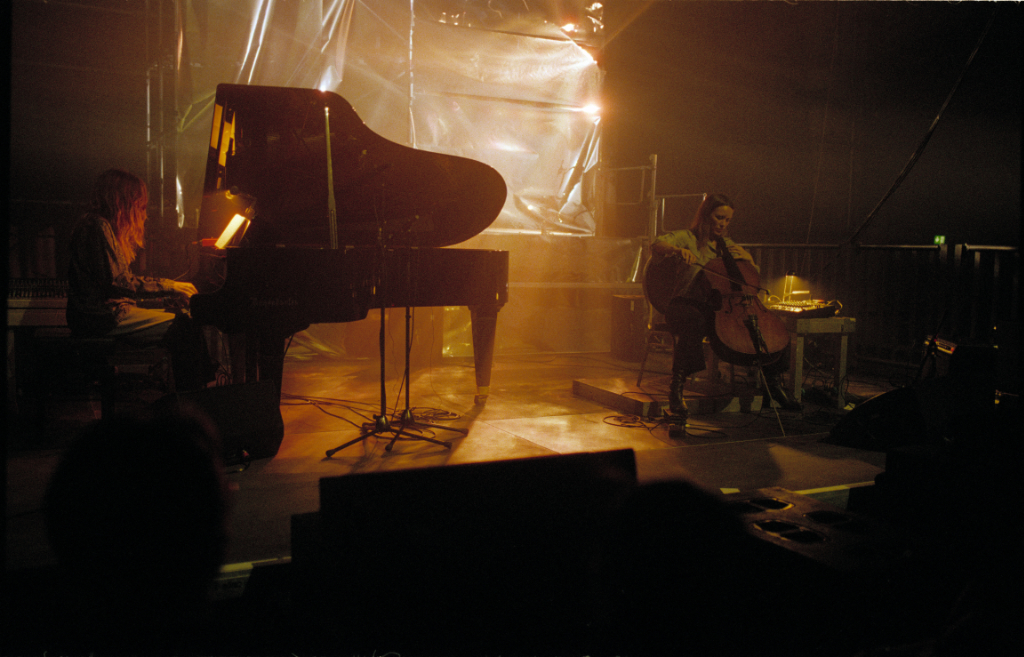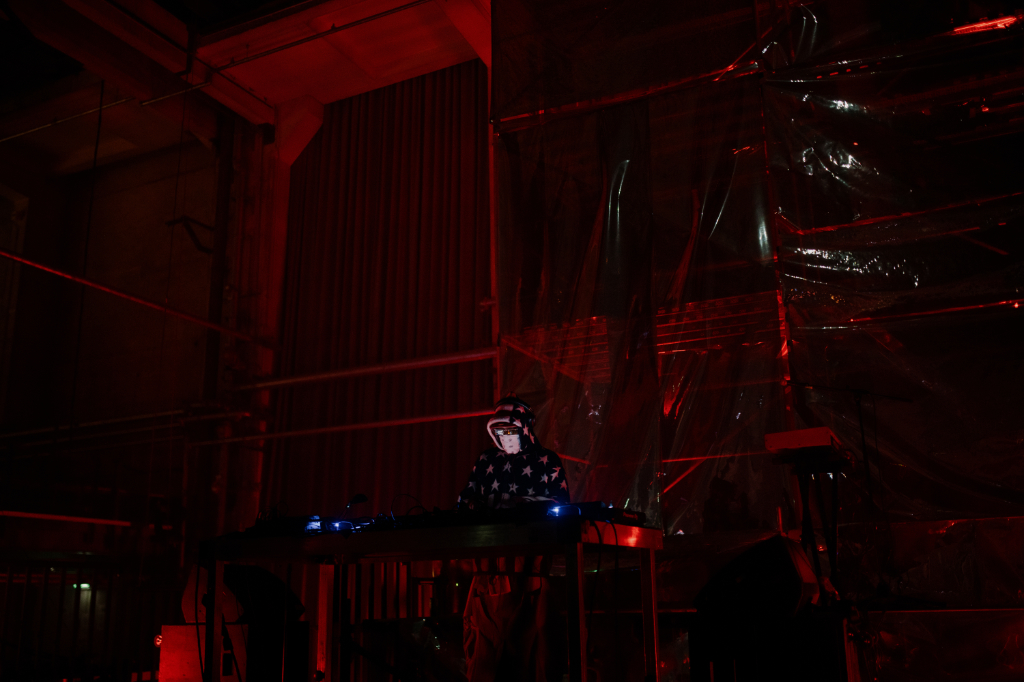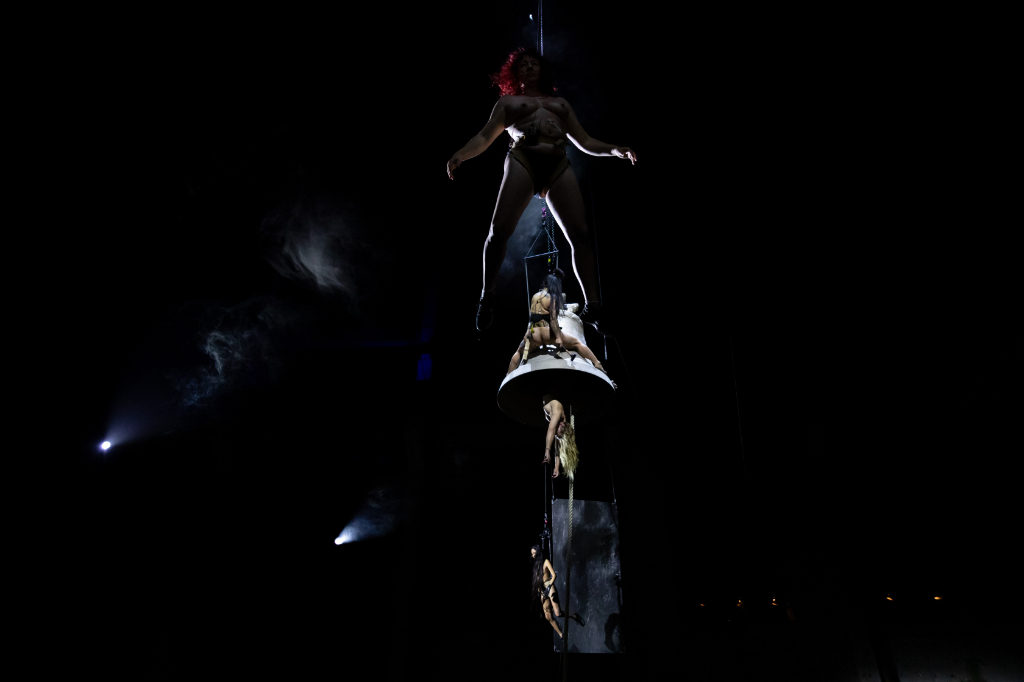Text by Olya Karlovich

I vividly recall my first Berlin Atonal. I bought tickets on the advice of more progressive friends without having clear expectations from the festival or understanding its concept. However, there was everything that the Berlin scene is famous for —an industrial space striking in its scale and concrete architecture, a perfectly tuned sound system, a particularly trendy, homogeneous, but at the same time diverse audience, and even a food truck with vegan döners. But one thing still stood out from the canon.
Berlin Atonal was dominated by stunning noisy soundscapes, transcendental, ambient, unexpected vocal experiments and much more, instead of amphetamine-fuelled unstoppable techno, for the sake of which people have been lining up to city clubs for decades. At the same time, the festival perfectly combined avant-garde concerts with the hedonism of late-night parties. And, of course, I heard a lot of dance music there too.
This year, the organiser team announced the most spectacular edition in their history and the creation of an entirely new type of festival-going experience. I only attended three of the eleven festival days, but even over one weekend, it became clear that Berlin Atonal is blurring the line of what we can call experimental.
Laurel Halo, joined by the cellist Leila Bordreuil, opened the festival’s main stage with her new live show Atlas. Mixed with synthetic ambient elements, artists’ acoustic collages took listeners on an endless journey through the depths of the subconscious. The piano melodies either swayed in waves or rushed in shimmering streams, sensual and elusive. It was truly amazing how the Kraftwerk space organically transformed in unison with the built soundscapes. The cold concrete walls seemed to shrink, the audience also stood closer to each other, and silver and gold rays softly scattered through the crowd, reflecting off the metal fabric behind the artists. We were both here and now and somewhere far away, surrounded and intoxicated by a sonic fog.


I didn’t have much time to wake up from Halo and Bordreuil’s musical trip. The breaks between performances lasted no longer than five minutes, and the stages turned on as if at the snap of a finger — a perfect orchestration of space, as one of my friends put it. Sometimes you just had to turn your head, and a new action was unfolding before your eyes.
Click! And I was already looking at a huge copper bell, from which (instead of a clapper) a naked female body hung. The picture was as intriguing as truly aesthetic. The further the performance by the Austrian artist Florentina Holzinger went, the stronger the emotions on the audience’s faces — from delight to sincere shock. The bell ringing intertwined with techno beats, more naked performers descended somewhere from above, and two of them literally suspended from large metal hooks. I swear I saw blood dripping on the floor, a guy behind me complained.
Referring to religious images and motifs, as well as the sound world, Holzinger used human bodies as musical instruments to create compositions. Her Atonal debut was a provocative and compelling statement on the cusp of physical and spiritual. The biblical theme came up in various performances this year. Thus, Honour, the ‘anonymous’ PAN’s artist, combined Christian mythology with atypical electronic instrumentation, dark ambient, soul, field recordings and abstract vocalisations in his THE BLOOD (2TEARS & A $UCKET) show. The resulting sermon sounded apocalyptic, enhanced by Kraftwerk’s cathedral-like acoustics. When the emotional dynamism reached its limit, Honour left the stage. We listened to the last minutes of his set under the gaze of a digital Jesus on a large screen.
Another stunning first-weekend show was the A/V experience Rhizomes by Aho Ssan and visual artist Sevi Iko Dømochevsky — loud, immersive and sometimes overwhelming in a good way. Fueled by vivid images and overflowing sonic structures, my imagination pictured vague shapes that bent and mutated. Musical roots grew in all directions, climbing up the concrete columns. I am sure that even if you play this music quietly, the walls will still be shaking, a friend standing next to me noted.
In contrast to the epic Rhizomes soundscapes, Loraine James‘ music smoothly drifted between past and present, the mundane and the sublime, textured melodies and sparkling beats. But it was this enjoyably apathetic reflection and calmness, supported by visuals from IVOR Alice, that made the artist’s performance Gentle Confrontation particularly sincere and atmospheric.


Among memorable festival moments is Nontokozo F. Sihwa’s, AKA Venus Ex Machina, debut. Bringing to life the spatial fantasy of Lemuria, a sunken continent in the Indian Ocean, Sihwa bombarded the audience with layers of electronic and digital sound. She used the acoustic power of Kraftwerk to its maximum. And when she took the microphone, her delay-enhanced voice sounded like an epic final crescendo. At that moment, I sank to the ocean bottom with Lemuria.
If drum rhythms were at the core of the Venus Ex Machina show, Space Afrika and Caterina Barbieri constructed an almost beatless mix of melancholy and airy sadness. And although the artists’ collaboration may have initially surprised many, their commissioned piece turned out to be incredibly organic. We usually see Barbieri on a modular, but this time, she mostly sang and played an acoustic guitar. Her ghostly-like melodies were sampled and repeated each other, creating a magical world where the boundaries between artificial and human elements were completely blurred.
Marcel Weber, aka MFO, was responsible for the visual storytelling in this project. His participation in the festival scenography and lighting deserves special attention in general. The Atonal design is minimalistic, you won’t see ‘extra’ decorative elements or flashy navigation. However, Weber and his team always manage to reveal Kraftwerk’s potential in the context of a particular experience. Ultimately, the festival’s greatest asset remains the power plant’s impressive main hall with its strict geometry and acoustic capabilities.
However, this doesn’t mean you should ignore other stages. For example, on the first weekend, the ground floor Null saw performances by Zebra Katz, Holy Tongue, Alessandro Adriani, Rrose and many others. Joining forces with MFO, Aya presented there the u can make me hole again live, inflaming the audience to the limit with her unique charisma, heavy bass lines and maelstrom of jungle breaks. With a mic in hand, she shouted out ironic life remarks or comments about her tracks. And we sincerely adored everything the artist said, did or played. This is what usually happens when a rock star takes the stage.
But festival-goers were even more excited by Sandwell District, closing out the main on Friday with their new A/V show. Heavy beats, classic 4/4 kicks, cinematic melodies soaring into huge vaults, true techno madness. Well, Berlin remains Berlin even in its most experimental manifestations. But looking back at the past weekend, I again come back to the question — what can be called experimental today? Perhaps the next Berlin Atonal will help us to find out.





